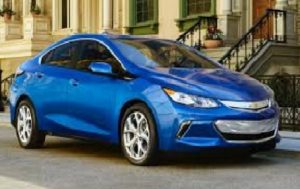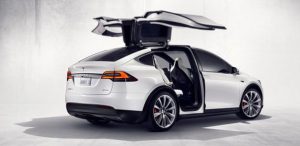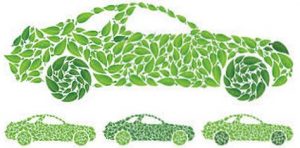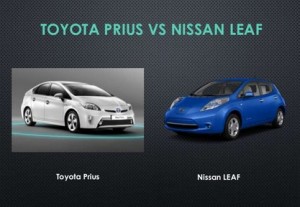by Jon LeSage, editor and publisher, Green Auto Market
Here’s my take on the 10 most significant and interesting occurrences during the past week…….
 Hybrid and EV sales: Hybrid and plug-in sales followed the overall market, which has been down over the past three months. Hybrid sales in October were down 15.3% from September and 13.1% from October 2015. Plug-in hybrid and battery electric car sales were down 29.36% from September, but were up 13.47% over October 2015. The Chevy Volt and Ford Fusion Energi led plug-in hybrid sales. Tesla saw a sizable drop in sales that may been affected by Tesla slowing down production to enable new autonomous technology hardware. Sales in November and December are expected to go back up as Tesla works hard at hitting quarterly sales goals.
Hybrid and EV sales: Hybrid and plug-in sales followed the overall market, which has been down over the past three months. Hybrid sales in October were down 15.3% from September and 13.1% from October 2015. Plug-in hybrid and battery electric car sales were down 29.36% from September, but were up 13.47% over October 2015. The Chevy Volt and Ford Fusion Energi led plug-in hybrid sales. Tesla saw a sizable drop in sales that may been affected by Tesla slowing down production to enable new autonomous technology hardware. Sales in November and December are expected to go back up as Tesla works hard at hitting quarterly sales goals.- Building the Bolt: General Motors has started production of the all-electric Chevrolet Bolt at its assembly plant in Orion Township, near Detroit. The first of the electric cars capable of going 238 miles on a charge will show up for sales before the end of the year, the automaker said. Badged as the Opel Ampera-e in Europe, the new model is due to be launched in European markets next year.
- Toyota long-range EVs: Toyota Motor Corp. may be joining the race for long-range electric cars, according to the Nikkei. The automaker is exploring mass-producing battery electric cars that would hit the market by 2020, the Japanese news report said. In late October, Toyota said it has worked with Panasonic Corp., which also produces lithium ion batteries with Tesla, to improve the precision in battery cell assembly and extend range. This new battery technology will roll out soon in the soon-to-be-launched Prius Prime plug-in hybrid electric vehicle. That plug-in hybrid will go 37.3 miles on battery alone before the gasoline engine takes over; the new battery technology may go into all-electric, extended range cars, too.
- Uber and Maven: Uber announced it will be partnering with General Motors’ new carsharing service, Maven. Uber drivers will be able to rent GM vehicles on a weekly basis. GM and Uber will be in a 90-day pilot where drivers will be able to rent GM vehicles for $179 plus taxes and fees per week. That was a bit surprising given that Uber’s main competitor, Lyft, now has a partnership with GM. A similar program, called Express Drive, had been started up for Lyft drivers and operates in about 10 U.S. cities. Alliances between automakers and mobility services continue to expand this year, including Toyota and Uber; Toyota and Getaround; and Volkswagen and Gett.
- LA Auto Show: The Los Angeles Auto Show is launching a pre-car show segment for media and industry professionals called AutoMobility LA. Taking place Nov. 14-17, and to the general public Nov. 18-28 at the LA Convention Center, the latest technology devices will be displayed that embrace all forms of transportation and complement new and traditional vehicles. Located in the South Hall Atrium, “GO” features the latest smart mobility devices that can include electric scooters, bikes, or mobility apps. Also keep in mind that the annual Green Car of the Year award winner will be named on Thursday, Nov. 17 at the Technology Pavilion at LA Auto Show.
- Free Tesla charging ending for new owners: Tesla owners had been able to fast charge for free for the past four years, using Tesla’s Supercharger Network. Drivers had access to free charging at a worldwide network of 4,600 chargers. That will come to an end soon as the company adopts a “change to the economics of Supercharging.” Cars ordered vehicles before January 1 and delivered before April 1, 2017, still will have free access to Superchargers. Customers who order after Jan. 1 will receive 400 kilowatt-hours – about 1,000 miles – of free charging credits annually, then will pay a fee “less than the price of filling up a comparable gas car,” the company said. Upcoming Model 3 owners won’t have access to free charging, CEO Elon Musk said during a shareholders meeting in May.
- VW scandal continues: Volkswagen AG’s chairman Hans Dieter Pötsch has been added to the list of executives under investigation over fraudulent emissions reporting. The chair and former chief financial officer is suspected by German prosecutors of violating securities laws, especially failing to notify shareholders quickly enough about the financial risks of the scandal. German prosecutors have been at work on plea agreements with other executives; and former CEO Martin Winterkorn and board member Herbert Diess have been under investigation for failing to disclose information.
- Gas and diesel engines waning: Internal combustion engines (ICEs) may be heading toward the end of their shelf lives, according to a Lux Research study. Governments may one day make them illegal and ICEs may be priced out of the market, according to the study. Netherlands has considered banning ICEs by 2025, with a similar debate starting in Norway. India would like to see 100% of new car sales go to something other than ICEs by 2030. Germany’s legislature is also considering a total ban by 2030. The study says that ICEs may actually decline earlier than government mandates push for. EVs are getting cheaper by the year, thanks to improving batteries and mass production. ICEs are getting more expensive, due to tougher fuel efficiency regulations that require more complex and pricier engineering like 10-speed rather than five-speed transmissions, double- and triple-turbocharging, and other new and costly technologies.
- Wrightspeed extended range trash trucks: Wrightspeed rolled out what is says was the first commercial application of a range-extended electric refuse truck last week. Through its partner company, The Ratto Group, in Sonoma County, Calif., Wrigtspeed’s turbine-electric powertrain will be placed in at least 15 vehicles deployed into the trash hauling company’s fleet over the next year. With fuel economy up to about 7 mpg in combined electricity-liquid fuel operation, the powertrain can slash annual fuel consumption by 70 percent or more compared with the average diesel garbage truck, Wrightspeed said.
- Lutz on autonomous vehicles: Bob Lutz, former vice chair at General Motors and champion of the Chevy Volt, thinks that fully autonomous vehicles are 15 to 25 years away. Lutz expressed his views during the annual awards dinner of the Michigan Venture Capital Association. His vision for the future is different than Google’s and several automakers. Cars will be replaced by “modules” that will look like telephone booths laid down, and electronically linked in a seamless train on the freeway moving at 200 to 250 mph. They’ll be powered by inductive electrical rails in the freeway, Lutz said.

 EV and hybrid sales: Plug-in electric vehicle sales were up substantially month-over-month and year-over-year – 17% over January and 6.7% over February 2014. The Tesla Model S, Chevrolet Volt, and Ford Fusion Energi saw sizable gains over last year, while the Nissan Leaf was down 22.4%.The Nissan Leaf has been declining in its position as the clear market leader, coming in fourth place for the first time, narrowly behind the Ford Fusion Energi plug-in hybrid. Tesla is continuing to take the lead in overall electric vehicle sales, with the Model S far ahead of the Chevrolet Volt and Nissan Leaf – and the recently launched Model X seeing a 25% increase in sales over January 2016. Hybrids continue to be hurt by low gasoline prices, declining to 1.8% of overall market share when it was in the 2.5% range for a long time. Sales were down nearly 10% since last year.
EV and hybrid sales: Plug-in electric vehicle sales were up substantially month-over-month and year-over-year – 17% over January and 6.7% over February 2014. The Tesla Model S, Chevrolet Volt, and Ford Fusion Energi saw sizable gains over last year, while the Nissan Leaf was down 22.4%.The Nissan Leaf has been declining in its position as the clear market leader, coming in fourth place for the first time, narrowly behind the Ford Fusion Energi plug-in hybrid. Tesla is continuing to take the lead in overall electric vehicle sales, with the Model S far ahead of the Chevrolet Volt and Nissan Leaf – and the recently launched Model X seeing a 25% increase in sales over January 2016. Hybrids continue to be hurt by low gasoline prices, declining to 1.8% of overall market share when it was in the 2.5% range for a long time. Sales were down nearly 10% since last year.

